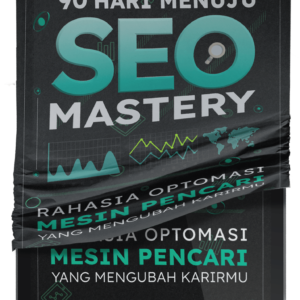Affiliate Marketing Content Strategies: Building Trust and Driving Sales
Creating effective affiliate marketing content strategies isn’t just about placing affiliate links everywhere. You need a well-thought-out content strategy to gain audience trust and ultimately drive purchases. Here’s why content strategy is crucial:
Why Content Strategy Matters in Affiliate Marketing
- Builds Trust: Quality content, such as honest reviews or comprehensive guides, helps establish credibility with your audience.
- Increases Traffic: Relevant content with good SEO optimization makes your website or blog easier to find on search engines.
- Converts Audience to Buyers: Strong content strategies allow you to understand your audience’s needs and offer solutions through your affiliate products.
Choosing the Right Niche for Affiliate Marketing
Affiliate marketing is one of the best ways to earn passive income online. However, success doesn’t just depend on the products or affiliate programs you choose but also on the niche you focus on. Here’s how selecting the right niche influences your content strategy:
Why the Right Niche Matters
- Improves Focus and Authority:
Focusing on a specific niche allows you to dive deeper into the topic, building expertise and credibility. - Easier to Target Audiences:
A specific niche helps you target an audience already interested in the products or services you promote. - Reduces Competition:
A well-chosen niche with lower competition increases your chances of standing out compared to broad, saturated topics.
Tips for Choosing a Profitable and Relevant Niche
- Identify Your Interests and Skills:
- Choose a niche you understand or are passionate about.
- For example, if you enjoy traveling, niches like travel gear or destination guides are good options.
- Find Problems That Need Solutions:
- Focus on niches where audiences need specific solutions.
- Example: Many people search for ways to clear acne; you could choose a skincare product niche.
- Conduct Market Research:
- Use tools like Google Trends, Ahrefs, or Semrush to measure niche demand.
- Check relevant keywords and their search volumes.
- Ensure Relevant Affiliate Programs:
- Not all niches have high-quality affiliate programs. Choose one with good products to promote.
- Evaluate Competition:
- Analyze competitors in your niche. If competition is too high, focus on a more specific sub-niche.
Creating Quality Content for Affiliate Marketing
Content is king in affiliate marketing. Without quality content, it’s difficult to build trust and engage audiences to purchase through your affiliate links. Below are types of effective content, tips for writing authentically, and how storytelling can boost conversions.
Effective Content Types for Affiliate Marketing
- Product Reviews
- What to Do: Focus on key benefits and features, share personal experiences if possible.
- Why It’s Effective: Honest reviews help audiences understand the product and build trust.
- Guides (How-To Articles):
- What to Do: Provide solutions to specific problems, e.g., “How to Choose the Right Camera for Beginners.”
- Why It’s Effective: Educational content showcases your expertise while promoting products as solutions.
- Video Content (Reviews, Tutorials, Unboxings):
- What to Do: Create visually engaging videos with clear narration and demonstrations.
- Why It’s Effective: Videos provide an immersive experience and build confidence in your recommendations.
- Product Roundups or Lists:
- What to Do: Create lists like “Top 10 Travel Accessories for 2024” with pros and cons for each product.
- Why It’s Effective: Lists simplify comparisons and help audiences make decisions quickly.
Tips for Writing Authentic and Convincing Content
Modern audiences are critical and wary of content that only aims to sell. To win their trust, authenticity is key:
- Know Your Audience:
- Understand their needs, problems, and desires.
- Use language that resonates with your target readers.
- Share Personal Experiences:
- Write about your direct experiences with the product.
- Example: “When I first tried , I was surprised by how quickly it improved my workflow…”
-
eBook
eBook SEO Mastery | 90 Hari Menjadi SEO Expert
Original price was: Rp349,000.Rp97,000Current price is: Rp97,000. Add to cart
-
- Provide Evidence and Facts:
- Add data or statistics to support your claims.
- Include testimonials from other users if relevant.
- Avoid Overly Salesy Language:
- Focus on real benefits rather than exaggerated claims.
- Example: Instead of saying, “This product is amazing!” explain, “This product reduced my daily workload by 50%.”
The Importance of Storytelling in Affiliate Marketing
Storytelling is the art of delivering a message through narratives. In affiliate marketing, it’s an effective way to emotionally connect with your audience.
Why Storytelling Works:
- Builds Emotional Connections: Stories show your audience that you understand their needs.
- Increases Trust: Honest and relatable stories make your recommendations more credible.
- Makes Content Engaging: Stories break the monotony of overly technical product reviews.
How to Use Storytelling:
- Use Personal Narratives:
- Share how you discovered the product you’re promoting.
- Example: “I used to struggle with organizing my tasks until I found . It transformed how I manage my day…”
-
eBook
eBook SEO Mastery | 90 Hari Menjadi SEO Expert
Original price was: Rp349,000.Rp97,000Current price is: Rp97,000. Add to cart
-
- Include Conflict and Resolution:
- Start with a relatable problem and show how the product solves it.
- End with a Call-to-Action (CTA):
- Wrap up your story by encouraging your audience to try the product.
Optimizing SEO for Affiliate Content
SEO (Search Engine Optimization) is essential for success in affiliate marketing. Quality content won’t reach the right audience without effective SEO strategies. In this section, we will discuss important steps such as keyword research, how to add keywords naturally, and using meta tags, headings, and internal linking.
Keyword Research for Your Affiliate Niche
Before creating content, the first step is to perform keyword research. This helps you identify relevant keywords with high potential to attract organic traffic.
Why Is Keyword Research Important?
- Helps you understand what your audience is searching for.
- Increases your chances of ranking in search results.
- Helps determine content topics aligned with your niche.
How to Conduct Keyword Research:
- Use Keyword Research Tools: Tools like Google Keyword Planner, Ahrefs, or Ubersuggest can help you find keywords with high search volume and low competition.
- Analyze Long-Tail Keywords: Long-tail keywords like “affiliate marketing guide for beginners” tend to have lower competition and higher conversion rates.
- Check Related Searches on Google: At the bottom of Google search results, you’ll find additional relevant keyword ideas.
- Use “People Also Ask”: This feature provides insights into common questions your audience is asking.
Keyword Research Tips for Affiliate Marketing:
- Focus on action intent keywords such as “buy now,” “best review,” or “discount.”
- Target specific keywords for particular products or niches, such as “best vlogging cameras 2024.”
How to Add Keywords Naturally Without Keyword Stuffing
Adding keywords to content should be done carefully. Google values natural, valuable content, so keyword stuffing (excessive repetition of keywords) can harm your SEO efforts.
What is Keyword Stuffing?
- Keyword stuffing refers to the practice of excessively and unnaturally inserting keywords into content, which can degrade the reader’s experience and result in SEO penalties.
How to Add Keywords Naturally:
- Place Strategically:
- Use keywords in the title (H1), subheadings (H2, H3), and the first paragraph.
- Include keywords in the meta description.
- Use Synonyms or LSI (Latent Semantic Indexing) Keywords:
- LSI keywords are related words that support your primary topic. For example, for “affiliate marketing strategies,” you could use “affiliate marketing tips” or “how to succeed in affiliate marketing.”
- Integrate Smoothly:
- Bad Example: “Affiliate marketing strategies are affiliate marketing strategies for affiliate marketing.”
- Good Example: “With effective affiliate marketing strategies, you can significantly boost conversions.”
- Use Moderately:
- Target a keyword density of around 1-2% of the total word count.
Optimizing Meta Tags, Headings, and Internal Linking
Technical optimization, such as meta tags, headings, and internal linking, plays a crucial role in SEO but is often overlooked. Here’s how to use these elements effectively:
Optimal Meta Tags:
- Meta Title:
- Use the main keyword at the start of the title.
- Example: “Affiliate Marketing Strategies: A Complete Guide for Beginners.”
- Meta Description:
- Write an engaging description that contains the main keyword.
- Example: “Learn the best affiliate marketing strategies to boost your earnings. Click here for the full guide.”
- Alt Text for Images:
- Add short descriptions to images using relevant keywords.
SEO-Friendly Headings:
- Structure articles using H1 for the main title, H2 for primary subtopics, and H3 for additional subtopics.
- Ensure headings are relevant to the content and contain keywords if possible.
Effective Internal Linking:
- What is Internal Linking?
- Internal linking involves linking to other articles or pages on your website.
- Benefits of Internal Linking:
- Improves navigation for readers.
- Helps search engines understand your website structure.
- Internal Linking Tips:
- Link to relevant articles. For example, link to a guide on “How to Choose Products for Affiliate Marketing.”
- Use descriptive anchor text, like “complete affiliate marketing guide,” rather than “click here.”
Actively Promoting Affiliate Content
Creating quality content isn’t enough to succeed in affiliate marketing. Your content must reach the right audience to drive conversions. To do this, effective promotion strategies are essential. Here’s how to use social media, email marketing, and collaborations with influencers or other affiliates to maximize results.
Social Media as a Promotion Tool
Social media is a powerful platform for reaching a broad audience and promoting your affiliate content.
Why Social Media Matters:
- Wide Audience Reach: Platforms like Instagram, Facebook, and Twitter have millions of active users daily.
- Real-Time Interaction: Engage directly with your audience through comments, DMs, or live sessions.
- Variety of Content Formats: Social media allows you to use various formats, such as images, videos, and short texts.
Social Media Promotion Tips:
- Choose the Right Platform:
- Focus on platforms used most by your target audience.
- Example: Use Pinterest for visual products like furniture or fashion; LinkedIn for professional products.
- Use Engaging Visual Content:
- Post high-quality images or videos that reflect the value of your affiliate products.
- Example: Create unboxing or tutorial videos.
- Leverage Hashtags:
- Use relevant hashtags to increase visibility.
- Example: #AffiliateMarketingTips or #ProductReview.
- Include a Clear Call-to-Action (CTA):
- Example: “Click the link in the bio to read the full review and get an exclusive discount!”
- Paid Promotions:
- Use paid ads on platforms like Facebook or Instagram to reach a wider audience.
- Segment your audience based on location, interests, or behaviors.
Email Marketing for Segmented Audiences
Email marketing is highly effective for promoting affiliate content to an audience already interested in your niche.
Benefits of Email Marketing:
- Personalized Content: Send messages that are relevant to your audience’s needs.
- High ROI: Email marketing generally provides higher returns on investment (ROI) compared to other promotional methods.
- Builds Loyalty: Consistently delivering quality content builds long-term relationships with your audience.
Email Marketing Strategies for Affiliate Marketing:
- Build a Quality Email List:
- Ensure your audience has opted in to receive emails from you.
- Use lead magnets like free eBooks or exclusive discounts to attract subscribers.
- Segment Your Audience:
- Group subscribers based on their preferences, such as types of products they’re interested in or their buying stage.
- Write Engaging Emails:
- The subject line should grab attention.
- Example: “Discover the Best Products for X Problem!”
- Use friendly language and include clear CTAs, such as “Click here for exclusive offers.”
- Email Automation:
- Use tools like Mailchimp or HubSpot to set up email automation.
- Send follow-up emails after a subscriber opens or clicks a link.
- Email Frequency:
- Avoid overwhelming your audience with emails.
- Ideally, send 1-2 emails per week with relevant content.
Collaborating with Influencers or Other Affiliates
Collaborating with influencers or other affiliates can boost your content’s visibility.
Why Collaboration Works:
- Access to New Audiences: Influencers and affiliates have loyal followings, allowing you to reach new markets.
- Increased Credibility: When trusted figures recommend your products, conversion rates usually rise.
How to Collaborate with Influencers:
- Choose Relevant Influencers:
- Ensure the influencer’s audience aligns with your niche.
- Define Collaboration Types:
- Examples: Sponsored posts, product reviews, or giveaways.
- Offer Attractive Incentives:
- Provide commission for each sale generated by the influencer.
- Track Performance:
- Use unique discount codes or links to track results.
Collaborate with Other Affiliates:
- Join affiliate communities to find potential partners.
- Example: Co-create content like webinars or eBooks.
Read More: The Future of Affiliate Marketing: Trends and Predictions for 2025
Analysis and Optimization for Affiliate Marketing Content Strategies
Affiliate marketing is not just about creating and promoting content. To achieve long-term success, you need to regularly analyze your content’s performance and optimize it based on data. This section explores how to use analytics tools, measure ROI, and refine your affiliate content strategy using available insights.
Using Analytics Tools to Evaluate Content Performance
Analytics tools are your best friends in affiliate marketing. These tools provide a comprehensive view of how your content is performing and what areas need improvement.
Why Are Analytics Important?
- Understand what’s working and what’s not in your strategy.
- Identify opportunities to boost conversions.
- Track audience journeys from their first visit to making a purchase.
Recommended Analytics Tools
- Google Analytics
- Monitor website traffic, traffic sources, and your most-visited pages.
- Analyze metrics such as bounce rate and average session duration to gauge audience engagement.
- Affiliate Network Dashboards
- Many affiliate programs offer built-in dashboards displaying data like clicks, conversions, and commissions.
- Heatmap Tools (e.g., Hotjar, Crazy Egg)
- Analyze user behavior on specific pages to see which areas attract the most attention.
- UTM Tracking Tools
- Add UTM parameters to your URLs to track the effectiveness of promotions across various platforms.
Key Metrics to Monitor
- Click Volume: The number of people clicking on your affiliate links.
- Conversion Rate: The percentage of clicks that result in purchases.
- Earnings Per Click (EPC): The average revenue generated from each click.
- Click-Through Rate (CTR): The ratio of impressions to clicks on a link.
Measuring ROI from Affiliate Content
Return on Investment (ROI) is a critical metric for evaluating whether your affiliate marketing efforts are paying off.
Why Is ROI Important?
- Helps determine the efficiency of your strategy.
- Guides decisions on whether to continue with specific content types or promotional channels.
Basic ROI Formula
- Revenue: Commissions earned from sales through affiliate links.
- Cost: Total expenses, including content creation, paid promotions, or tool subscriptions.
Example ROI Calculation
If you generate $500 from affiliate content and spend $200 on promotions:
This means for every $1 spent, you earn $1.50 in profit.
Tips for Optimizing ROI
- Evaluate Costs: Reduce expenses that don’t yield significant results.
- Focus on High-Performing Content: Increase promotion for content that consistently delivers high ROI.
By leveraging analytics and regularly refining your strategy, you can maximize the potential of your affiliate marketing efforts and build a sustainable source of income.
Tips for Refining Your Strategy Based on Data
After analyzing your content’s performance, the next step is to implement the necessary adjustments. Here are some actionable tips to improve your strategy:
1. Identify Underperforming Content
- Check metrics like high bounce rates or low click-through rates (CTR).
- Analyze whether the content aligns with your target audience’s interests.
2. Optimize Content with Untapped Potential
- Update articles that have high traffic but low conversion rates.
- Add elements such as compelling calls-to-action (CTAs) or more visible affiliate links.
3. Experiment with New Content Formats
- If blog posts are not yielding desired results, try alternative formats like videos or infographics.
- Example: Turn a written review into a product demo video for better engagement.
4. Conduct A/B Testing
- Test various elements in your content, such as headlines, images, or affiliate link placements.
- Choose the version that delivers the best results.
5. Focus on High-Performing Traffic Sources
- If social media promotion outperforms email marketing, allocate more resources to social media campaigns.
6. Monitor Performance Consistently
- Schedule monthly or quarterly reviews to assess your content’s performance and make data-driven decisions.
Conclusion
1. Choosing the Right Niche
Selecting the right niche is the first and most critical step in affiliate marketing. A relevant and profitable niche helps you build a loyal audience and increases your chances of success. Take the time to research and don’t hesitate to explore new niches that match your interests. Remember, a solid niche forms the foundation of an effective content strategy.
2. Creating High-Quality Content
Producing quality content isn’t just about writing articles or making videos—it’s about providing value to your audience. Using the right type of content, maintaining authenticity, and incorporating storytelling can help you build trust and boost conversions. Keep in mind that audiences buy from those they trust, and your content is the key to building that trust.
3. Optimizing SEO for Affiliate Content
SEO optimization not only enhances your visibility on search engines but also helps your audience find the solutions they need. By conducting thorough keyword research, naturally incorporating keywords, and optimizing meta tags, headings, and internal links, you can drive more traffic and increase conversion rates.
4. Actively Promoting Content
Active content promotion is a vital part of your affiliate marketing strategy. Utilize social media, email marketing, and influencer collaborations to reach a wider audience and improve conversions. Consistent and relevant promotion ensures your content achieves maximum results.
5. Continuous Analysis and Optimization
Analysis and optimization are ongoing processes in affiliate marketing. Using analytics tools, accurately measuring ROI, and improving strategies based on data will enhance the efficiency and outcomes of every piece of content you create. Remember, affiliate marketing is a long-term journey, and every step of optimization brings you closer to success.



